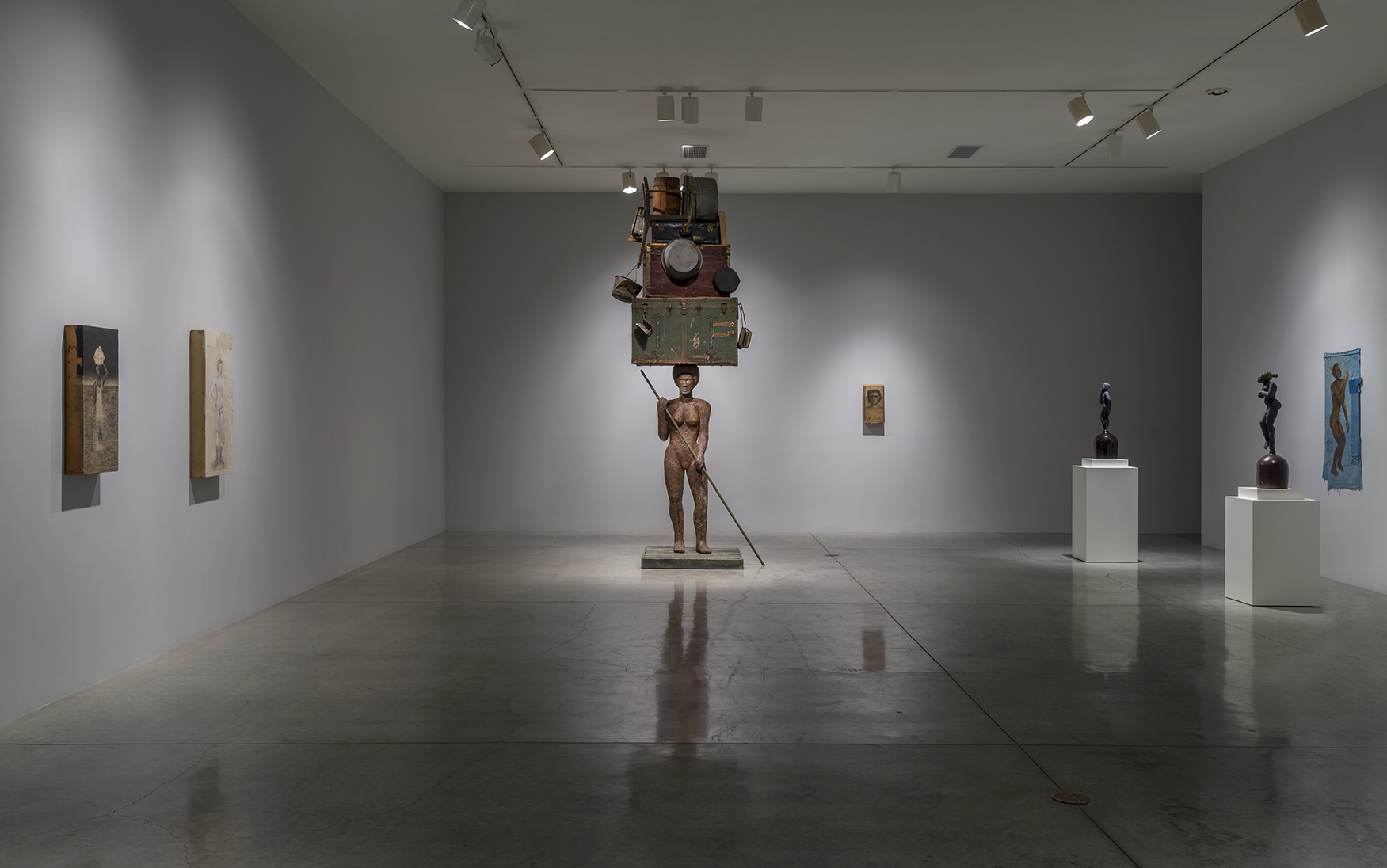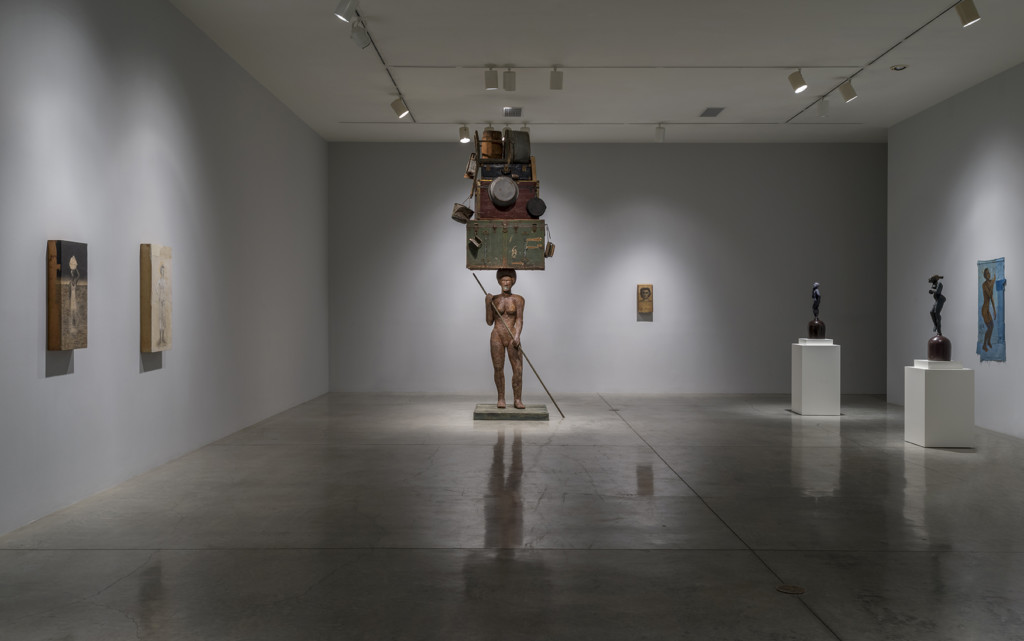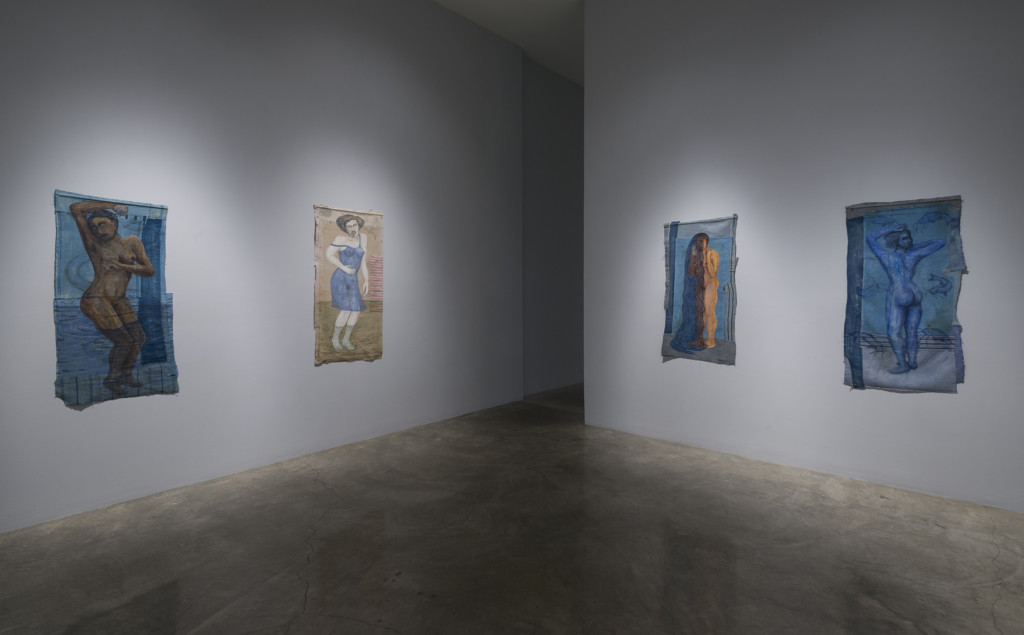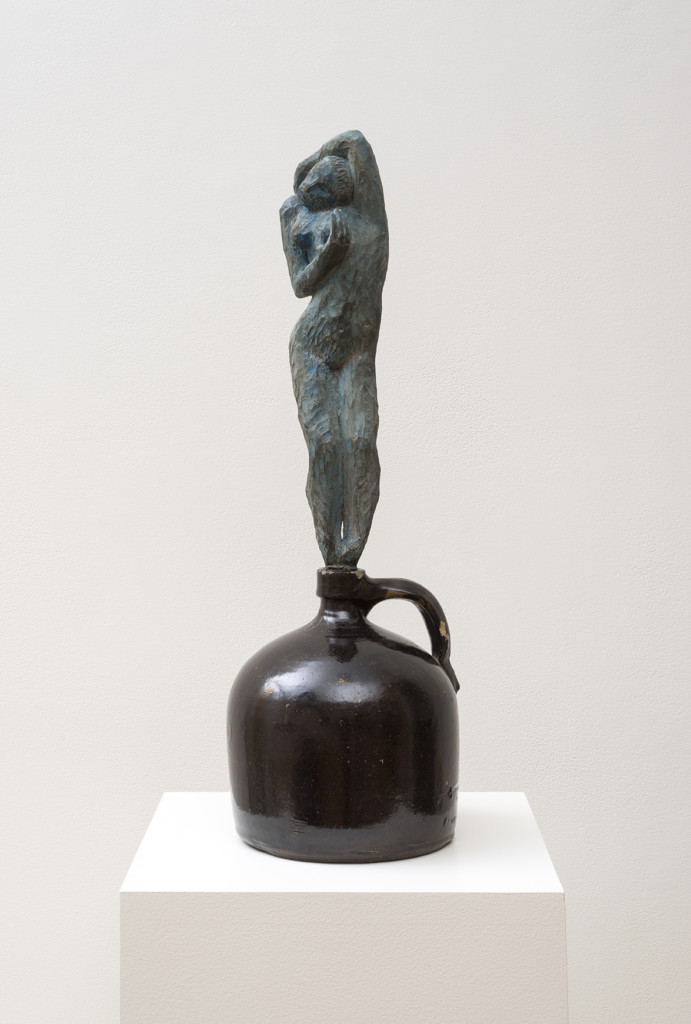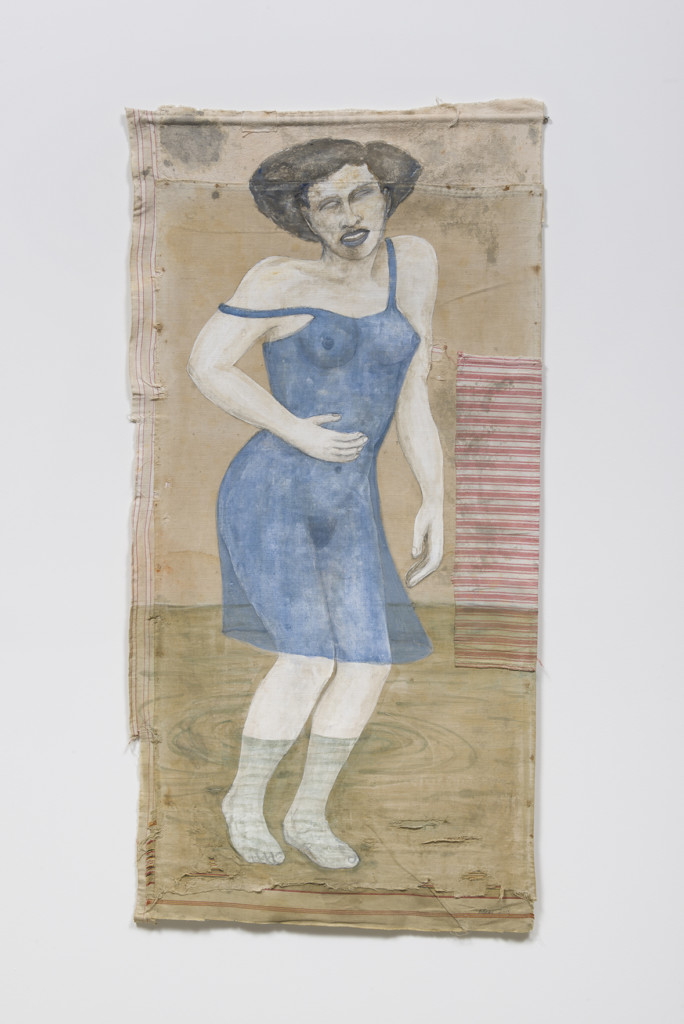Words by Marc Haefele, Senior Arts Writer, Bermudez Projects
Silt, Soot and Smut is largely inspired by a 90-year-old national catastrophe many of us have never heard of – the Great Mississippi Flood of 1927, which put an area of the Deep South’s Delta country nearly the size of Indiana under as much as 30 feet of water. More than 200,000 Black people lost their homes in the floods, many of them fleeing North. (Now you know why so many old blues songs are about terrible floods. Several of them are quoted in the exhibition). National attempts at relief came on a strictly “whites first” basis, and blacks suffered disproportionately. Saar’s show of assemblages, paintings and sculptures evokes that suffering, but also connects it with the larger narrative of African American history as well as history in general in those troubled times.
But in the beginning, there is water – the first thing you see coming into the gallery are four illuminated, tagged partly-full gallon jugs, designated Hades DWP. Suggesting how simple tap water can become hell on earth when it falls as prodigiously as it did on the Mississippi Delta in 1927. Then there is Deluge, a huge severed head, supported in the air by it gray, wiry hair that falls to the floor in a metallic cascade. The head is brown, and skinned in Saar’s trademark epidermis that she uses on many of her sculptures: embossed tin sheet taken from ceilings of old buildings. The metal’s unrelated flowery patterns add a kind of collageish, unearned merriment to her fundamentally somber, life-size nude female statues.
One of which is close by. Centering an assemblage called Breach, she is poling a raft about the size of a throw rug. But she and that tiny raft are carrying a tower of real objects, perfectly balanced on her head. They include steamer trunks, a flat iron, a kerosene lantern, several tubs and metal dippers and a wooden keg. It’s the classic nightmare of trying to escape a catastrophe with far too much stuff to carry, but this woman on her raft seems implacable, balanced and strong under her burden, calm and more than equal to her impossible task. She is an African American ideal. Yet her burden is similar to those that occur in assemblages of modern African artists like Camaroon’s Pascal Tayou.
Then there are more jugs – the traditional ‘’little brown’’ ceramic jugs long associated with bootleg whiskey. My favorite was called Hooch `n Hoochie Coochie. It is a joyful thing, a carven black bacchante writhing atop her jug in an erotic twirl. Strangely, it recalled to me 19th century French painter J.A.D. Ingres’ own notorious jug maiden, La Source.
The silent river flows through the show is perfectly visible in Saar’s paintings (some of which reprise her sculptures). Her nude and near nude figures, with eyes as bare of pupils as Little Orphan Annie’s, are all submerged or partly submerged in its waters. The pictures often have titles of dances with wet names: The Quagmire Quiver; The Black Bottom Stomp. And waist deep as they are, their subjects seem to be dancing. As though dancing was the key response to this disaster of inundation.
(Alison Saar, Hooch n’ Hoochie Coochie, 2016. Wood, acrylic, ash, tar and wax and found ceramic jug. 25 x 8 x 8 inches.)
(Copyright Alison Saar. Courtesy of L.A. Louver, Venice, CA.)
(Alison Saar, Sleufoot Slide, 2015. Acrylic, gesso and charcoal on found sugar sacks and linens.)
(53 x 26 1/2 inches. Copyright Alison Saar. Courtesy of L.A. Louver, Venice, CA.)
(Installation view, Courtesy of L.A. Louver, Venice, CA.)


